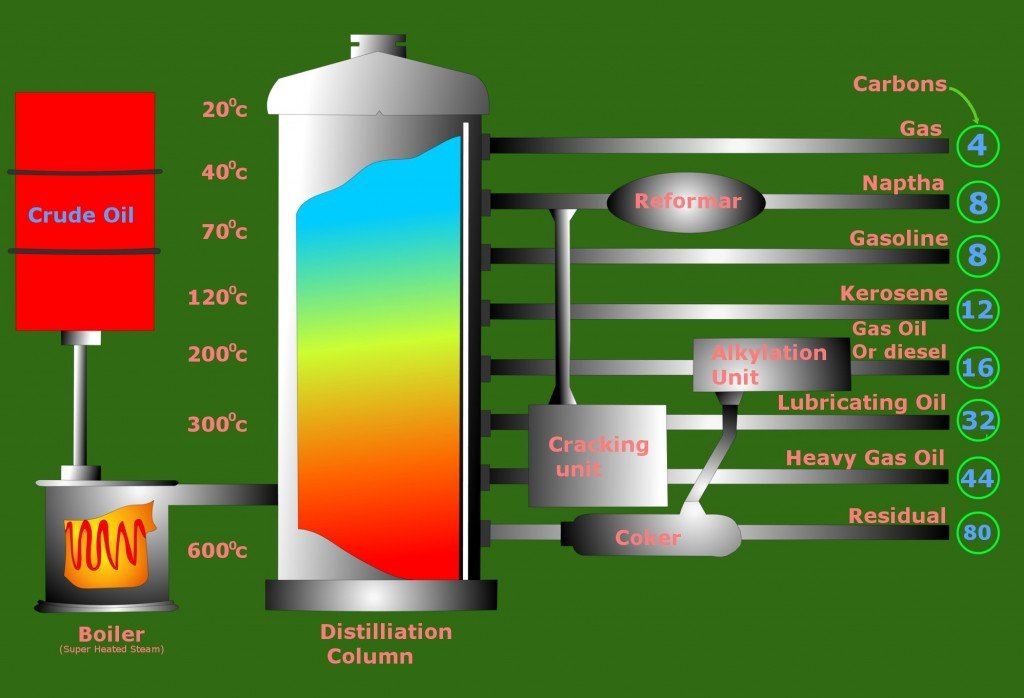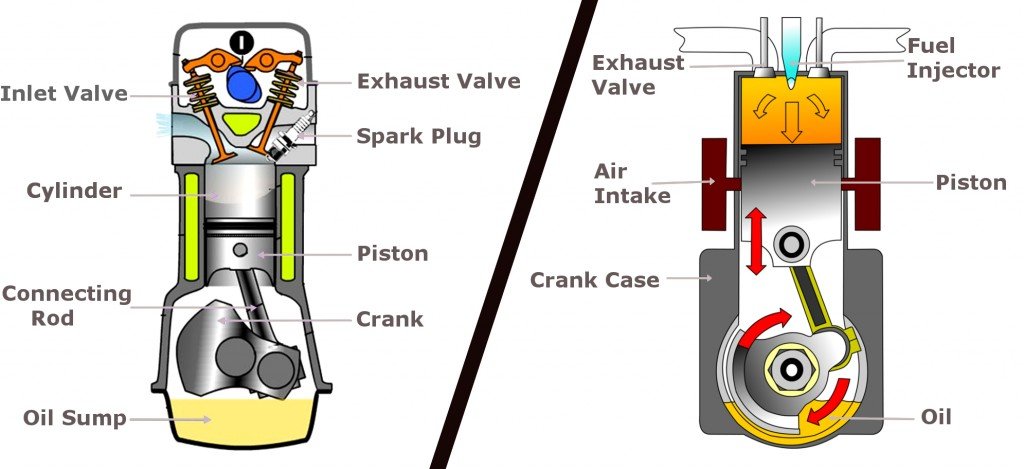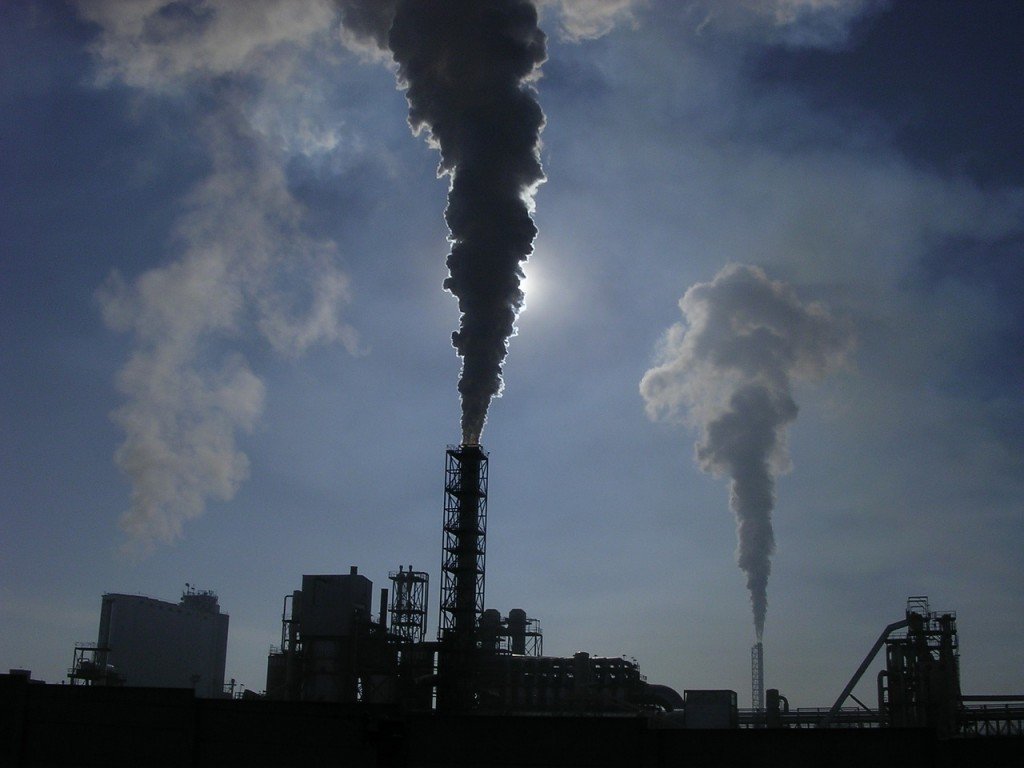Table of Contents (click to expand)
Diesel and petrol are both obtained from crude oil, but diesel is more efficient and suitable for steady motion because it is denser and ignites more slowly than petrol. Diesel engines are also sturdier and heavier than petrol engines, but they require more maintenance.
Both petrol and diesel are obtained from crude oil that has been squashed deep in the bowels of our planet. Both are equally ubiquitous: diesel powers larger engines, such as those of trucks, boats and cranes, while petrol powers smaller engines, such as those of cars and bikes. Ever wonder why that is the case? Also, what is it about diesel that makes it more efficient and suitable for steady motion, whereas petrol often causes shoulder-jolting acceleration?
Both fuels are equally ubiquitous because both fuels are equally important. Each has its own pros and cons. Understanding the difference between the fuels will reveal these various facets and the answers to the queries above.
The Difference Between Diesel And Petrol
Crude oil is a haphazard medley of hydrocarbons. These molecules of hydrogen and carbon form either long, linear chains or rings called cyclic compounds. The boiling point of a chain or ring is proportional to its size. This is obvious, as breaking a long, extensive chain of molecules is more strenuous than breaking a small or scanty chain of molecules. We can exploit this property to refine the oil or separate the chains from each other.

Also Read: Which Is A Better Fuel – Petrol Or Diesel?
Fractional Distillation
The extracted crude oil is first poured into a gigantic furnace. The furnace or column is then heated. The heating distills the crude oil, and this process is called fractional distillation because it, as the name suggests, causes the crude oil to fractionalize. Vertically, different regions of the furnace are subjected to different temperatures. The temperature, which is the lowest at its head, increases as we move towards its feet, where it is at a maximum.
Remember that longer chains are more difficult to break than shorter chains. Therefore, subjecting the different regions of the furnace to different temperatures allows us to extract carbon chains and rings of different lengths from the oil. Fractionalizing then allows us to extract various fuels from crude oil.
At the top of the furnace, lighter carbon chains or fuels exhibiting lower boiling points of 40-205℃ are obtained, such as LPG and petrol, while in the middle, denser fuels exhibiting higher boiling points of 250-350℃ are obtained, such as diesel. At the bottom of the barrel, the densest compounds are obtained, such as lubricants.

It is now obvious why petrol can cause shoulder-jolting acceleration: as a consequence of being much lighter, it ignites much more quickly than the dense diesel fuel does. However, as a consequence of being denser, diesel packs more hydrocarbons and therefore more energy per unit of volume than petrol does.
Typically, petrol comprises a recurring chain of no more than nine carbon atoms, while chains constituting diesel contain at least fourteen carbon atoms. Diesel cannot evaporate as rapidly as petrol, but being more glutinous (it is for its viscous, oily texture that it is often called diesel oil), it only packs 132 x 106 J per gallon, while petrol packs 155 x 106 J per gallon. Consequently, vehicles fueled by diesel are more mileage-oriented than vehicles fueled by petrol.
However, while a truck might not generate heart-racing RPMs, it does produce astonishing torque and therefore power – the capability to move massive loads. A smaller vehicle’s inability to generate such Herculean torque is attributed to its engine. The operation of a diesel engine is significantly different from that of a petrol engine.

Petrol ignites more readily than diesel does. Light a match and drop it in a puddle of petrol, and witness how it lights ablaze almost instantaneously. It is for this reason that petrol engines utilize spark plugs. In a petrol engine, the mixture of air and petrol is compressed by a piston and then ignited by a spark. A diesel fuel, however, is not so flammable. In a diesel engine, the air is compressed first, and then the diesel is injected. Compressed air combusts, and the air in a diesel engine is compressed so severely that the diesel fuel ignites as soon as it is injected.
Steady ignition demands more compression, which produces more heat and therefore a greater capability to do work. The steady ignition has another advantage: it ensures that the fuel is leveraged. The amount of chemical energy converted into mechanical energy by a diesel engine is far greater than the amount converted by a petrol engine. Consequently, the efficiency of a diesel engine is far greater than the efficiency of a petrol engine.

However, to generate and sustain such great torque, an engine must possess great strength. Diesel engines are therefore relatively sturdier and heavier. The problem is, the heavier the equipment, the greater the intensity of its vibration. The vigorous vibration makes it more liable to wear and tear. As a consequence, diesel engines generally require more maintenance than petrol engines. Furthermore, diesel engines, as a result of their mass, are constantly stuck in a vicious cycle. With great mass comes great resistance to motion, or inertia, so the diesel engine must achieve greater compression to generate a greater torque to move this mass. However, to generate and sustain this greater torque, it requires even heavier components, which, of course, increase its mass!
What’s more, the combustion of diesel produces dense smoke, or what is called smog and soot – black particles spawned by partial combustion. (Remember that, according to the first law of thermodynamics, an engine can be very efficient, but not fully efficient.) The smog is what causes acid rain, while the soot is detrimental to our eyes and skin, but more alarmingly, it can prove fatal if inhaled. Naturally, shouldn’t we opt for petrol? Well, not really. Petrol is equally detrimental. For producing carbon dioxide and carbon monoxide upon being combusted, petrol suffers universal hatred as the primary cause of global warming.

However, the fuels, despite their notorious reputation, are indispensable to us. All three sectors of economy and industry — primary, secondary and tertiary – would become defunct without diesel. It fuels agricultural machines, industrial machines, trucks, cranes, public transport, and every other large-scale machine you can name. Petrol is what fuels cabs, cars, small boats, and every small vehicle you can name.
Keeping this in mind, engineers seek innovations in technologies concerning both the refining of the oil and the engines that combust the procured fuel. After diesel is extracted, it is purged of compounds, the combustion of which produces nitrogen and sulfur – gases that cause acid rain. This process is rightly called purification. Innovations in the construction of petrol engines include units that absorb or, at least, mitigate carbon emissions. Diesel engines, because they vigorously vibrate, are raucous and therefore worsen the already woeful noise pollution caused by vehicles. However, owing to innovations in sound and mechanical engineering, engines are quieter and require lesser maintenance today than they used to.

In fact, burgeoning technological advances — which show no signs of slowing — will eventually render combustible fuel obsolete. A dramatic revolution is incipient. We have just begun to jog, soon we’ll begin to sprint and then we’ll make the leap. The future is not flammable, but electric. Posterity will drive (or fly?) cars that are mean as well as clean. Perhaps these cars will drive themselves.
Also Read: Why Is Diesel Not Used In Small Cars?
How well do you understand the article above!

